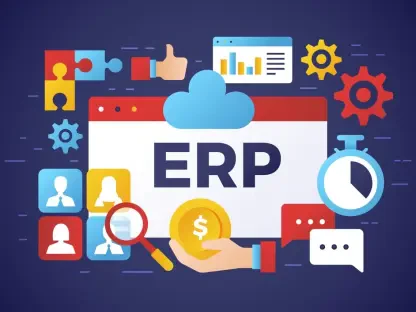Setting the Stage for Cloud Compliance Challenges
In today’s sprawling cloud environments, organizations face a staggering challenge: managing tens of thousands of policy violations that threaten compliance with critical frameworks like HITRUST and FedRAMP. A single enterprise might grapple with a backlog of over 30,000 issues, each requiring manual intervention that could take over a year to resolve. This overwhelming reality underscores a dire need for automation in infrastructure governance, pushing platform teams to seek innovative solutions. Enter Pulumi Neo AI, a platform engineered to transform how compliance is managed by leveraging artificial intelligence to tackle these backlogs head-on.
This review dives deep into the capabilities of Pulumi Neo AI, a cutting-edge tool designed to automate remediation of policy violations within cloud infrastructure. By exploring its core features, real-world impact, and alignment with industry trends, the analysis aims to provide a comprehensive understanding of how this technology addresses a persistent pain point. The discussion will also weigh its challenges and future potential, offering a balanced perspective on its role in reshaping Infrastructure as Code (IaC) practices.
Unveiling Pulumi Neo AI – A Game-Changer in Infrastructure Compliance
Pulumi Neo AI emerges as a pivotal solution in the realm of cloud governance, specifically targeting the automation of compliance processes. Built on the foundation of IaC, this platform harnesses AI to detect and remediate policy violations at scale, addressing the critical backlog issue that plagues many organizations. Its primary mission is to reduce the manual burden on platform teams, allowing them to focus on innovation rather than firefighting compliance issues.
The significance of this technology cannot be overstated in an era where cloud environments grow increasingly complex. As enterprises expand their digital footprints, the volume of policy violations often outpaces the capacity for human intervention. Pulumi Neo AI steps in as a scalable remediation tool, promising to streamline governance by embedding compliance directly into infrastructure management workflows.
This platform’s relevance is further amplified by the broader industry push toward automated solutions. With regulatory demands tightening and audit timelines shrinking, the need for efficient tools to maintain compliance has never been more urgent. Pulumi Neo AI positions itself as a timely answer, bridging the gap between identifying issues and implementing fixes with minimal human oversight.
Core Features and Technological Innovations of Pulumi Neo AI
AI-Driven Remediation for Policy Violations
At the heart of Pulumi Neo AI lies its ability to automatically identify and remediate policy violations using advanced contextual intelligence. Unlike traditional tools that merely flag issues, this platform analyzes the context of each violation and generates precise IaC fixes tailored to the specific environment. This capability drastically cuts down the time spent on manual corrections, enabling bulk remediation across thousands of issues.
The significance of this feature extends beyond efficiency to workload reduction for platform teams. By automating what was once a labor-intensive process, it frees up valuable resources for strategic tasks. Organizations can now address violations in weeks rather than months, a transformation that redefines operational timelines in compliance management.
Moreover, the AI-driven approach ensures accuracy in remediation by adapting to the unique configurations of each cloud setup. This adaptability minimizes errors that often accompany manual fixes, providing a reliable mechanism for maintaining compliance. The result is a robust system that not only identifies problems but actively resolves them with precision.
Policy as Code Integration in Developer Workflows
Another standout feature is the seamless integration of compliance enforcement into developer workflows through a shift-left approach. Pulumi Neo AI embeds Policy as Code directly into the IaC platforms developers use daily, ensuring that compliance checks and remediation occur early in the development cycle. This proactive stance reduces the likelihood of issues reaching production environments.
By aligning compliance with engineering processes, the platform minimizes friction between security and development teams—a common pain point in many organizations. Developers receive real-time feedback on policy adherence, empowering them to address potential violations before they escalate. This integration fosters collaboration and reduces the need for costly rework down the line.
The impact of this feature is a cultural shift toward shared responsibility for compliance. Rather than treating governance as an afterthought handled by separate teams, it becomes an integral part of the development process. Such an approach not only enhances security but also accelerates delivery timelines by catching issues at the source.
Emerging Trends in Cloud Compliance and Pulumi’s Role
The landscape of infrastructure governance is undergoing a significant transformation, with a marked shift from mere detection to comprehensive remediation. Industry experts note that traditional tools, while adept at identifying violations, often leave organizations struggling with actionable next steps. Pulumi Neo AI aligns perfectly with this trend, offering a solution that goes beyond flagging issues to actively fixing them at scale.
Automation has emerged as a cornerstone of modern compliance strategies, driven by the sheer volume and complexity of cloud environments. The demand for integrated tools that handle end-to-end governance—from auditing to prevention—is on the rise. Pulumi meets this need by extending its Policy as Code framework to remediate existing infrastructure, even for resources not yet managed through IaC.
Additionally, there is a growing emphasis on reducing friction in compliance processes through developer-centric solutions. Pulumi’s platform resonates with this movement by embedding governance into familiar workflows, ensuring that security measures do not hinder productivity. This alignment with industry needs positions Pulumi as a leader in redefining how compliance is achieved in dynamic cloud settings.
Real-World Impact and Applications of Pulumi Neo AI
Across diverse industries, Pulumi Neo AI has demonstrated tangible benefits in managing compliance with stringent frameworks. Organizations dealing with HITRUST and FedRAMP requirements have reported substantial reductions in violation backlogs, with some achieving a 20% decrease in issues within just a few weeks. Such results highlight the platform’s capacity to deliver rapid improvements in governance posture.
Beyond backlog reduction, the platform has streamlined audit processes by presenting controls in code rather than cumbersome documentation. This innovation has slashed the time needed to secure Authority to Operate (ATO) in regulated sectors, with timelines dropping from over a year to an anticipated few months. The operational efficiency gained here is a game-changer for entities under tight regulatory scrutiny.
Unique use cases further illustrate the versatility of Pulumi Neo AI. For instance, enterprises with hybrid cloud setups have leveraged the platform to unify compliance across disparate environments, ensuring consistent policy enforcement. These applications underscore the tool’s adaptability, making it a valuable asset for organizations navigating varied infrastructure challenges.
Challenges and Limitations in Pulumi Neo AI Adoption
Despite its strengths, adopting Pulumi Neo AI is not without hurdles, particularly around the technical complexities of AI-driven remediation. The automation of changes in intricate cloud setups can raise concerns about unintended consequences, prompting some organizations to approach implementation cautiously. Ensuring that AI decisions align with specific business rules remains a key consideration.
Organizational resistance to automated changes also poses a barrier, as teams may worry about losing control over critical infrastructure adjustments. Pulumi addresses this through configurable guardrails and approval workflows, which provide oversight while maintaining automation benefits. These mechanisms aim to balance efficiency with accountability, though they require careful tuning to fit unique needs.
Access to advanced features presents another challenge, as capabilities like AI remediation are often tied to higher-tier Pulumi Cloud plans. This tiered structure may limit smaller organizations from fully leveraging the platform’s potential. Ongoing efforts to expand accessibility and refine AI capabilities are underway, signaling a commitment to broadening the tool’s reach over time.
Future Outlook for Pulumi Neo AI and Infrastructure Governance
Looking ahead, Pulumi Neo AI holds promise for further evolution, particularly in enhancing its contextual analysis through deeper AI advancements. Potential improvements could enable even more nuanced remediation strategies, adapting to increasingly complex cloud architectures. Such progress would solidify its role as a cornerstone of compliance automation.
Broader integration with diverse cloud ecosystems also looms on the horizon, potentially expanding the platform’s compatibility with a wider range of tools and services. This could facilitate seamless governance across multi-cloud and hybrid setups, addressing a growing need in the industry. The ability to unify compliance under a single framework would be a significant leap forward.
In the long term, Pulumi Neo AI has the potential to influence industry standards for automation and scalability in governance practices. As it matures, the platform could drive a paradigm shift in how organizations approach compliance, moving toward fully automated, proactive systems. This trajectory suggests a future where manual intervention becomes the exception rather than the norm.
Final Assessment and Key Takeaways of Pulumi Neo AI
Reflecting on the evaluation, Pulumi Neo AI proves to be a transformative force in addressing compliance backlogs, offering robust automation through AI-driven remediation. Its integration into developer workflows stands out as a strength, aligning seamlessly with industry demands for efficiency and collaboration. The platform’s real-world impact is evident in reduced violation counts and streamlined audits, marking it as a vital tool for platform teams.
Looking forward, organizations are encouraged to explore pilot implementations of Pulumi Neo AI to assess fit within their specific environments. Consideration of guardrail configurations and team training emerges as critical next steps to maximize benefits while mitigating risks of automated changes. Engaging with Pulumi’s support resources to navigate tiered features also offers a pathway to broader adoption.
Ultimately, the journey with Pulumi Neo AI points toward a strategic shift in infrastructure governance, urging companies to prioritize automation in their compliance roadmaps. As the industry continues to evolve, staying abreast of enhancements in AI capabilities and ecosystem integrations becomes essential for leveraging the full potential of such innovative platforms. This forward-thinking approach promises to keep organizations ahead in managing the complexities of cloud compliance.









